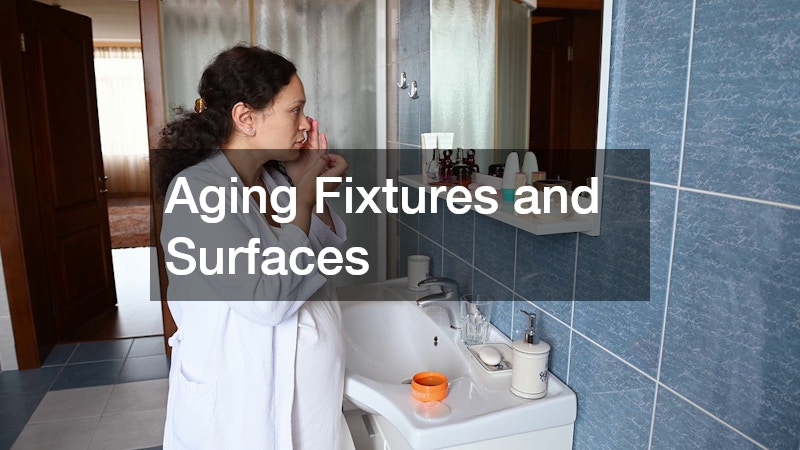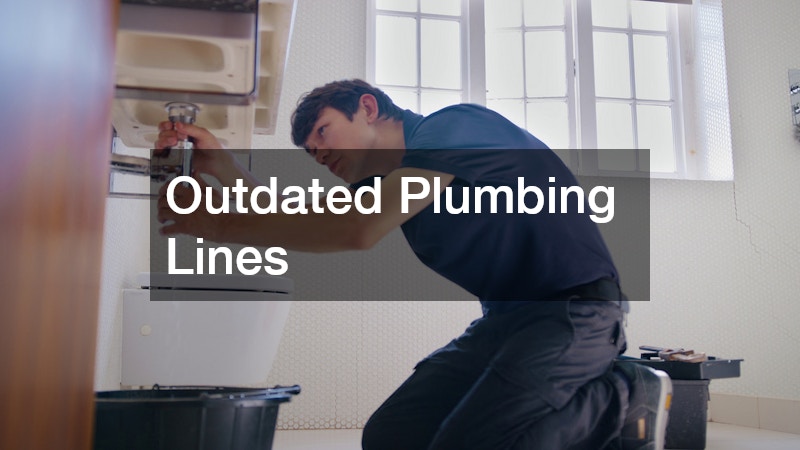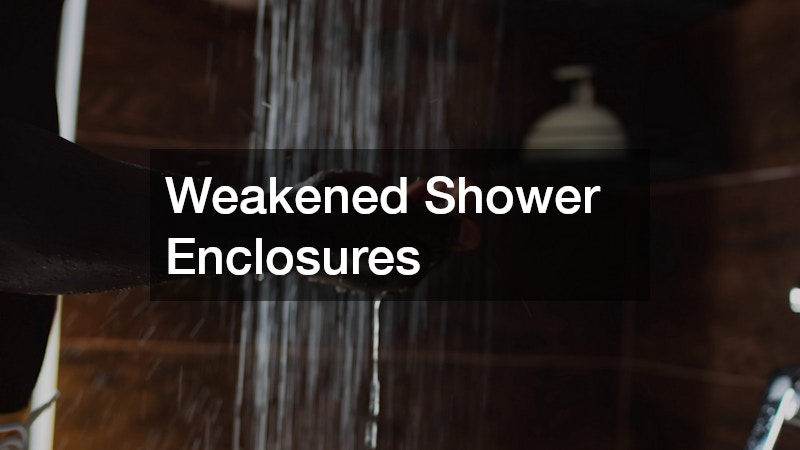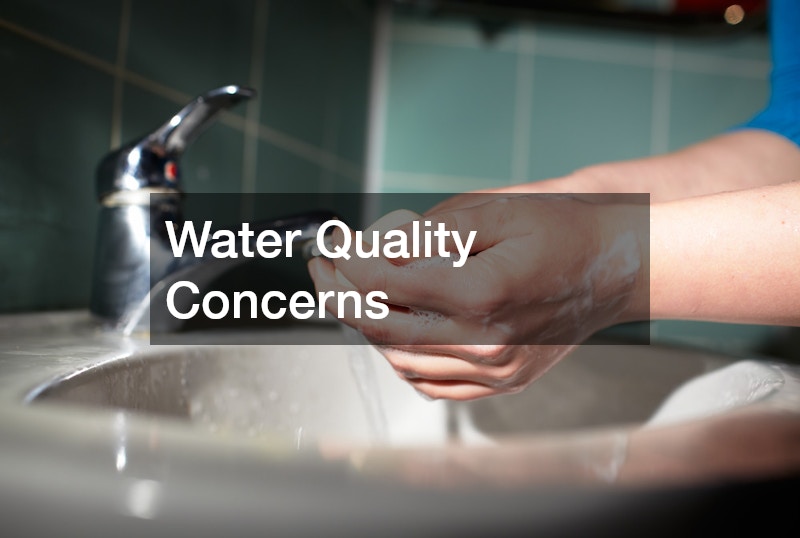Older bathrooms can be charming, but they often contain underlying problems that only become clear once a renovation begins. These hidden red flags are easy to overlook when a homeowner focuses on design choices, color palettes, or new fixtures. Many aging bathrooms carry decades of moisture exposure, outdated building materials, and structural weaknesses that don’t reveal themselves until walls are opened or flooring is removed. Even small signs—like faint discoloration, persistent odors, or loose tiles—can indicate deeper issues that threaten the stability of the room.
Homeowners planning updates usually expect a few surprises, but older bathrooms tend to deliver more than anticipated. This happens because past repairs may have been done quickly, cheaply, or with materials no longer considered safe or durable. Pipes might be original to the home, wiring may fall short of modern electrical standards, and ventilation may be insufficient for the amount of humidity the bathroom handles each day. All these elements combine to create conditions ripe for hidden damage.
Understanding these risks ahead of time helps homeowners budget realistically and avoid frustrating delays. It also encourages proactive inspection before any demolition begins. Renovating an older bathroom isn’t just about improving the look of the space—it’s about ensuring long-term reliability, safety, and function. When you know what warning signs to watch for, you can approach your remodel with confidence and avoid being blindsided by problems lurking beneath the surface.
Structural Weaknesses Behind Old Walls
A common concern in older bathrooms involves the systems that help regulate household comfort. Many homes have outdated climate components that struggle to keep moisture levels balanced. When these systems weaken, the environment inside the bathroom becomes more vulnerable to hidden deterioration. One issue that frequently emerges during updates is the impact of old temperature-control units on humidity retention. As these units age, an increased strain can push homeowners toward air conditioning repairs. These air conditioning repairs can reveal long-term moisture accumulation behind the walls, and repeated air conditioning repairs often expose deeper concerns that must be addressed before remodeling moves forward. Because excess humidity can weaken framing, surfaces, and insulation, ensuring that any needed air conditioning repairs are handled before major renovation steps is essential for long-term stability. By completing air conditioning repairs early, homeowners reduce the chance of new materials being damaged by lingering moisture.
Deteriorated Built-In Storage
Storage areas inside older bathrooms frequently hide long-term moisture exposure. Cabinetry installed decades ago often used materials that weren’t designed to withstand constant humidity. When these surfaces begin to break down, homeowners may notice warped doors, crumbling shelves, or softening structural panels. These symptoms usually indicate that deeper inspection is needed before renovation begins. That’s why homeowners often turn to bathroom cabinet contractors to evaluate hidden damage. Skilled bathroom cabinet contractors can spot subtle signs of mold, leaking pipes, or excessive steam retention within older walls. Many bathroom cabinet contractors discover underlying deterioration that homeowners never suspected. Before a remodel can proceed safely, bathroom cabinet contractors may need to replace compromised supports or remove aging cabinetry entirely. By involving trusted bathroom cabinet contractors early, families can better protect their upcoming renovation from costly surprises.
Aging Fixtures and Surfaces

Older bathrooms usually combine outdated designs with materials that have endured decades of use, which can mask hidden deterioration beneath the surface. While the primary goal of a renovation is often to refresh the look, the more critical concern is identifying unseen damage that may compromise the integrity of the space. Over the years, persistent moisture exposure can allow mold to develop in wall cavities, weaken tile adhesives, and erode grout lines, creating conditions that could affect the longevity of any new installation. Small signs, like slightly warped floors or discolored grout, are often just the tip of the iceberg. Once flooring is lifted or fixtures removed, homeowners may discover structural issues that have quietly progressed for years, including subfloor rot, water damage behind vanities, or weakened wall studs.
This is why many homeowners turn to experienced professionals who specialize in full bathroom remodeling services. These experts not only focus on aesthetic improvements but also conduct thorough evaluations of subfloor conditions, wall integrity, and lingering moisture issues before recommending new materials. During bathroom remodeling projects, teams often uncover ventilation problems, improperly installed plumbing, or electrical shortcomings that need correction to ensure the new space functions safely and efficiently. A careful assessment also prevents long-term issues, such as recurring mold growth or tile failure, which could otherwise emerge months after the renovation is complete.
By relying on skilled bathroom remodeling specialists, homeowners gain peace of mind knowing that every aspect of the room—from framing and flooring to ventilation and moisture control—is addressed systematically. The result is a bathroom that not only looks modern and stylish but also stands up to daily use for years to come. Proper planning and professional expertise ensure the remodel is both beautiful and durable, avoiding surprises that can turn a dream project into a costly headache.
Compromised Mirrors and Glass
Glass components in older bathrooms can reveal surprising issues during a renovation. Mirrors may show separation at the edges, glass panels may weaken, and shower enclosures can lose stability. These signs suggest prolonged moisture exposure, outdated installation techniques, or failing support brackets behind the walls. When glass elements become compromised, they can pose safety risks that homeowners might not recognize until renovation work begins. Many residents seek help from local glass replacement providers to resolve these concerns. These local glass replacement specialists inspect aging panels, identify stress fractures, and suggest secure alternatives. During local glass replacement assessments, experts often discover surrounding moisture damage that needs repair. Relying on local glass replacement services ensures that any new bathroom elements remain safely supported and visually appealing.
In addition to safety concerns, compromised glass can also affect the overall efficiency and functionality of a bathroom. Gaps in mirrors or shower panels can allow heat and humidity to escape, putting extra strain on ventilation systems and potentially accelerating the deterioration of surrounding materials. Homeowners often find that addressing these issues early prevents more costly repairs down the line, such as replacing water-damaged cabinetry or subflooring. Expert local glass replacement teams not only install durable, modern panels but also recommend preventive measures, like proper sealing and moisture-resistant backing, to reduce future risks. By investing in professional assessment and replacement, homeowners protect both the aesthetic appeal and structural integrity of their renovated bathroom.
Outdated Plumbing Lines

Plumbing systems in older homes often show signs of wear long before homeowners notice visible issues. Pipes installed decades ago may corrode, restrict water flow, or develop small leaks that cause hidden damage behind walls or beneath floors. When renovation work uncovers these concerns, the project timeline can expand significantly. To avoid these setbacks, many homeowners consult local plumbers during the planning stage. Professional local plumbers can identify early warning signs of corrosion, pressure imbalance, or aging connections. During initial inspections, local plumbers often detect hidden leaks that could compromise new materials down the road. Addressing these issues with trusted local plumbers ensures that the updated bathroom performs reliably after the renovation is complete.
Clogged and Aging Drains
Drainage systems in older bathrooms can deteriorate gradually without showing obvious signs of trouble, making them one of the more insidious hidden issues during a renovation. While slow draining sinks, occasional backups, or lingering unpleasant odors may be the first clues, these symptoms often point to more serious problems forming deep within the plumbing. Corrosion, mineral buildup, or tree root intrusion can compromise pipe integrity long before any visible water damage appears. When demolition or remodeling begins, these hidden issues can halt progress, delay timelines, and lead to unexpected repair costs if they aren’t identified in advance.
To prevent such disruptions, many homeowners opt to schedule professional drain cleaning prior to any major renovation work. Consistent drain cleaning helps eliminate years of accumulated debris, hair, soap scum, and mineral deposits that restrict water flow. Beyond improving drainage performance, this service allows technicians to inspect the condition of pipes for early signs of damage, such as minor leaks, weak joints, or corrosion. Detecting these issues during drain cleaning provides the opportunity to make repairs before new flooring, cabinetry, or fixtures are installed, protecting both the investment in the remodel and the longevity of the new materials.
Moreover, thorough drain cleaning can improve overall bathroom hygiene and prevent future maintenance problems. Blocked or sluggish drains can contribute to moisture buildup in cabinets, subfloors, and surrounding structures, creating ideal conditions for mold growth and wood deterioration. By addressing the plumbing system ahead of time, homeowners ensure that the remodeled space is functional, safe, and free of surprises. Proactive drain cleaning not only supports the new fixtures but also provides peace of mind, knowing the underlying plumbing can handle daily use without compromising the results of the renovation.
Weakened Shower Enclosures

Aging shower areas can conceal problems that aren’t visible from the surface. Older enclosures often rely on outdated framing or seals that allow moisture to seep behind the walls. Over time, this moisture can reach support beams, create mold growth, or foster structural instability. During a renovation, these issues must be resolved before any modern upgrades are installed. Many homeowners choose to improve both safety and style by replacing old surrounds with custom shower doors. These custom shower doors bring improved durability, better seals, and enhanced performance. Installers who specialize in custom shower doors often identify moisture problems early in the renovation process. Because custom shower doors rely on precise fitting and stable surfaces, catching hidden damage ensures a long-lasting installation. With high-quality custom shower doors, homeowners can upgrade the space while addressing underlying structural risks.
Hidden Ventilation Damage
Ventilation problems are common in older bathrooms, especially those lacking proper airflow. Poor ventilation allows steam to accumulate on walls, ceilings, and fixtures. Over time, this trapped moisture leads to cracks, peeling paint, and hidden mold. Many of these issues remain unnoticed until demolition exposes the underlying surfaces. One of the most effective ways to identify moisture concerns early is through thorough duct cleaning. Regular duct cleaning helps remove buildup that restricts airflow, making ventilation systems work more efficiently. By scheduling duct cleaning, homeowners improve indoor air quality and reduce the humidity that damages bathroom materials. During renovation planning, duct cleaning can reveal blockages, corrosion, or mechanical problems that must be addressed. When performed consistently, duct cleaning protects both the home’s comfort and the longevity of the remodeled space.
Water Quality Concerns

Old bathrooms sometimes hide problems related to water purity. Mineral buildup, discoloration, or unusual odor may indicate that the water reaching the bathroom contains contaminants that can damage fixtures or affect the comfort of those using the space. Before a renovation begins, many homeowners explore different water treatments to improve long-term performance. Modern water treatments can remove impurities that cause staining or accelerate wear on plumbing surfaces. By choosing effective water treatments, families reduce the risk of corrosion, lasting odors, or premature deterioration of new materials. In many cases, the need for water treatments becomes apparent only when old fixtures are removed, revealing visible mineral deposits. Maintaining high-quality water treatments helps protect the investment made during the renovation.
Damage Caused by Past Leaks
Older bathrooms sometimes conceal the aftermath of leaks that happened years earlier. These leaks may have been minor, repaired temporarily, or missed entirely. When demolition reveals soft flooring, discolored studs, or crumbling tile backing, it becomes clear that deeper restoration may be required. Many homeowners address these problems through water restoration services. Professional water restoration teams identify moisture pockets, remove damaged materials, and restore the underlying structure. Comprehensive water restoration helps ensure the renovated bathroom rests on a dry and stable foundation. Because older bathrooms often contain multiple layers of past repairs, water restoration can uncover hidden problems that would otherwise compromise the final results. Investing in thorough water restoration ensures the renovation lasts for years without recurring issues.
Renovating an older bathroom is an opportunity to enhance comfort, improve efficiency, and increase the value of the home. Yet beneath the surface, many signs of age and wear can complicate the process if they aren’t identified early. Hidden moisture, outdated materials, worn-down structural elements, and long-ignored leaks can all contribute to unexpected expenses and delays. By approaching the project with careful planning and a willingness to investigate potential concerns ahead of time, homeowners can avoid the most common setbacks. Renovation isn’t just about selecting new finishes—it’s about creating a safe, functional environment that will serve the home well for years to come. With proper preparation and expert guidance, even an older bathroom can be transformed into a reliable, modern space that meets the household’s needs.
